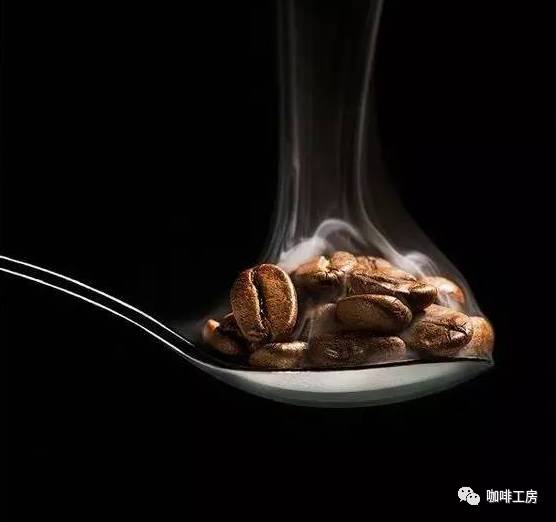[coffee roasting] firepower throttle (7) | Coffee workshop

[Coffee Roasting] Fire damper control of roasting machine (I)| Coffee workshop
[Coffee Roasting] Fire damper control of roasting machine (II)| Coffee workshop
[Coffee Roasting] Fire damper control of roasting machine (III)| Coffee workshop
[Coffee Roasting] Fire damper control of roasting machine (IV)| Coffee workshop
[Coffee Roasting] Fire damper (V) First explosion development stage (upper)| Coffee workshop
[Coffee Roasting] Fire damper (V) First explosion development stage (B)| Coffee workshop
[Coffee Roasting] Fire Damper (VI)| Coffee workshop
Professional barista communication, please pay attention to coffee workshop (Weixin Official Accounts cafe_style )
During coffee roasting, the temperature rise should be lower and lower. As roasting progresses, moisture and other substances are slowly removed from the beans, and the structure of the beans becomes more and more fragile due to heating, and the ability to transfer heat from the surface to the core of the beans becomes less and less.
In the first half of baking is mainly in the dehydration and ability accumulation, this stage is difficult to make the next minute temperature rise higher than the previous minute, usually higher than the previous minute temperature rise occurs in a period of time after turning yellow and before and after the explosion, once the temperature rise suddenly jumps, it is very easy to make the beans surface produce black focus, for coffee to bring a bitter taste and astringent taste, but also will destroy the good flavor.
Therefore, the baking curve should rise more and more slowly after the rewarming point. Therefore, the fire should be adjusted less and less during the baking process. For some beans that are particularly resistant to heat or high hardness, if you want to add a little fire during the baking process, you can only add a little, and then lower it later.

If you want a bean to have high flavor intensity, you can try to make the baking curve steeper. That is, the temperature rise in the early stage is pulled to a higher position, and the temperature rise in the later stage is slightly larger. The difference between the highest temperature rise and the lowest temperature rise in the baking process is increased. If you want coffee to taste thicker and have a better Body, you can try to lengthen the Maillard reaction time after yellowing, thus producing more substances that increase the taste, but doing so will also sacrifice the cleanliness and flavor clarity of the coffee, while increasing the complexity of the coffee.
If the time after explosion is prolonged, the color difference between the coffee bean core and the bean surface will be smaller, and the development will be better. This will also increase the weight of the coffee in the air, but it will make some of the floral fruit aroma be worn away, and the tonality of the beans will be deeper.
Therefore, a longer time from dehydration to the beginning of explosion will increase the complexity of coffee and develop more flavor and taste substances, but at the same time, it will reduce the cleanliness and permeability of coffee, and it is difficult to feel the clear flavor. Shortening this time will make coffee taste more refreshing, and the flavor of plants will be more, bringing tea feeling.

Longer post-pop times and higher temperatures at the end of the roast can both give coffee more of the flavor of roasting, such as dark chocolate, roasted nuts, cream, etc., but weaken the floral aromas. A higher temperature of the beans will make the caramelization reaction deeper, and more bitter substances will be produced to make the coffee thicker and darker. A lower temperature of the beans will make the coffee retain more of its own flavor, and a slightly longer post-explosion time will make the coffee taste fresh and soft. But too low a temperature or too long a post-pop time can leave coffee underdeveloped, producing a raw taste and acid.
Important Notice :
前街咖啡 FrontStreet Coffee has moved to new addredd:
FrontStreet Coffee Address: 315,Donghua East Road,GuangZhou
Tel:020 38364473
- Prev

America's top baristas teach you how to make a perfect cup of coffee!
Professional baristas please follow the coffee workshop (Wechat official account cafe_style) for Lyme Butler, coffee is not just coffee, a small cup of Italian concentrate can unite the world. Butler, winner of the 2016 US baristas Championship, traces the origins of his favorite drink: from the coffee farmer, to the company that roasted coffee beans, to him.
- Next

Cold extract Coffee course | Let Cold extract Coffee Save your Summer
Professional baristas Please follow the Coffee Workshop (official Wechat account cafe_style) as the weather is getting hotter and hotter, ice products in coffee shops and dessert shops are getting better and better. Even coffee, which we used to drink while it was hot, started the ice business. All kinds of cold coffee and iced coffee are becoming the new favorite of the market. Ahem ~ be serious! This is a practical information post! In many famous brand coffee shops
Related
- Beginners will see the "Coffee pull flower" guide!
- What is the difference between ice blog purified milk and ordinary milk coffee?
- Why is the Philippines the largest producer of crops in Liberia?
- For coffee extraction, should the fine powder be retained?
- How does extracted espresso fill pressed powder? How much strength does it take to press the powder?
- How to make jasmine cold extract coffee? Is the jasmine + latte good?
- Will this little toy really make the coffee taste better? How does Lily Drip affect coffee extraction?
- Will the action of slapping the filter cup also affect coffee extraction?
- What's the difference between powder-to-water ratio and powder-to-liquid ratio?
- What is the Ethiopian local species? What does it have to do with Heirloom native species?

